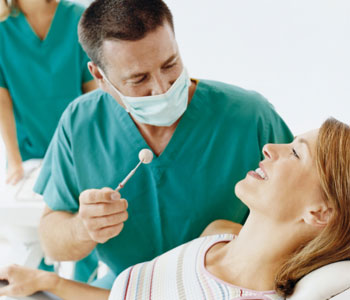

Clinic Changes to Maintain Safety of All During COVID-19 Read More About COVID-19
Mar

Historically speaking, the mouth was thought of as a separate entity. The teeth, gums, and oral cavity were treated on their own without knowledge of the impact on the rest of the body. Biological dentistry treats the patient as a whole, rather than focusing on a single system or body part. This understanding of whole body health goes together with understanding the dangers of mercury and its presence in dental amalgam. In Burr Ridge, Dr. Stopka maintains a mercury free, mercury safe dental office to protect her patients’ health.
The dangers and concerns of mercury toxicity have been known for years. Mercury is poisonous, non-radioactive, and naturally occurring. The World Health Organization (WHO) has declared that mercury is not safe at any level as even the smallest amount can cause harm. Unfortunately, mercury was and still is present in silver amalgam fillings, which are used by some dentists to treat cavities.
Dental amalgam often consists of tin, silver, mercury, and copper. Mercury is the binding agent that forms a strong material. These fillings can be inserted quickly and are considered durable. Amalgam fillings may be less expensive than alternatives, but it comes with a risk. By understanding the link between the mouth and body, we understand that everything that goes in your mouth, good or bad, impacts your physiology. Mercury in fillings is toxic. The fillings can break which releases more mercury. Temperature changes can cause the metal in these fillings to warp, which may result in structural damage to the tooth.
 Patients with amalgam fillings have measurable amounts of mercury in their bodies. This is due to the evaporation of mercury from the filling, which is then inhaled and absorbed into the bloodstream. When patients grind their teeth or chew, small amounts of mercury are released.
Patients with amalgam fillings have measurable amounts of mercury in their bodies. This is due to the evaporation of mercury from the filling, which is then inhaled and absorbed into the bloodstream. When patients grind their teeth or chew, small amounts of mercury are released.
Mercury is dangerous at any level. This toxic substance causes or contributes to several health issues including neurological, kidney, and pregnancy-related issues. In amalgam fillings, the mercury vapor is continually released, and the body gradually loses its ability to effectively remove the substance. This may result in chronic mercury toxicity and symptoms of health problems. The severity of a patient’s symptoms depends upon the number of fillings, how long they have been in place, and how they are stimulated.
Dr. Stopka understands the risks of mercury in amalgam fillings. She maintains a mercury free office by acknowledging the dangers the metal poses to patients, dental staff, and the environment. As a member of the International Academy of Oral Medicine and Toxicology (IAOMT), she adheres to proper handling practices and follows the strict protocol for the safe removal of amalgam fillings.
Patients may request the removal of their amalgam fillings. When this occurs, specific mercury-safe steps are taken before, during, and after the procedure. Standard removal of fillings uses a drilling technique that exposes the patient and team to harmful mercury vapors above a level that the government considers to be safe. Instead, Dr. Stopka follows guidelines laid out by the IAOMT to protect the health and safety of the patient, dentist, and staff. Some of the safety measures include:
Dr. Stopka understands the impact your oral health has on the rest of your body. Contact our mercury free dental office in Burr Ridge to schedule your appointment. Call (630) 756-5844.

With over two decades of experience, Dr. Janet S. Stopka is a driven, passionate and renowned professional in the field of dentistry. Her ability to provide patient-centered care and insistence on healthy biological dentistry has created an environment of trust and comfort amongst herself and her patients.
Whilst being a patient-oriented expert, she is also a strong advocate of mercury safe dentistry and invests in the latest technological equipment to assist and reduce risk during complicated dental procedures.
She is also a progressive and keen member of the IAOMT (International Academy of Oral Medicine and Toxicology).